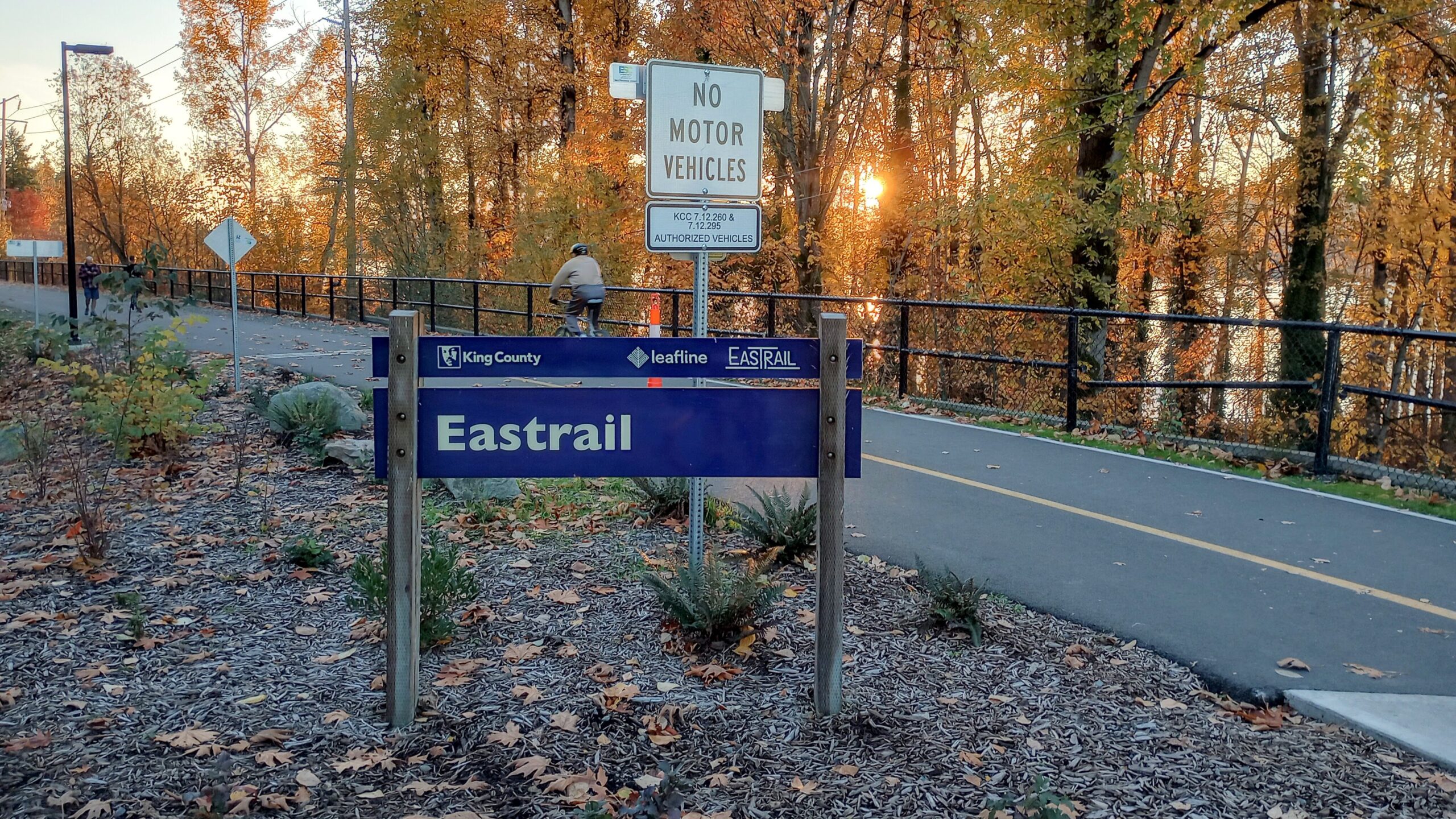King County Seeks Feedback on Trail Hours

King County Parks, which owns and operates several large segments of current and future Eastrail – and many other regional trails – is seeking feedback on their regional trail hours.
Currently, regional trails operated by King County are open “dawn to dusk,” meaning that, especially during winter, those who choose to use trails in the morning or evening may be using trails that are technically closed.
If you are someone who uses Eastrail, or other regional trails, even if only during daylight hours, we encourage you to take a few minutes to let King County Parks know your thoughts on extending trail hours:
Take the Parks Survey Here
Some sections of Eastrail, for example the Cross Kirkland Corridor of Eastrail, which is operated by the City of Kirkland, have longer opening hours. It is unrealistic to expect most trail users to realize the trail is operated by different owners, and most will likely pass between areas where rules change with know way of knowing. The Eastrail Regional Advisory Council has discussed the hope to bring more consistency to trail rules across the corridor, especially with new segments opening in Redmond, Woodinville, and Snohomish County in the coming years.
Because the Eastrail is more than just a trail – it plays an important role as regional transit infrastructure that users rely on to get around – Eastrail Partners supports the expansion of open hours along the trail. We hear regularly from trail users, including some elected officials, that they use the trails to commute to work during winter, when it is nearly impossible to stay within the hours of daylight. As many survey respondents have already pointed out, trails are often the safest place for bicycles, and existing laws already require the use of lights when it is dark.
Both the Eastrail Regional Advisory Council, as well as the King County Council, have discussed the possibility of extending trail hours. King County Parks is currently considering how it might change these operations hours, and as part of that work, is seeking input from the public.
Primary aspects to consider:
- Many shift workers commute outside of the “9 to 5” hours, and use the trail to commute even during longer summer days.
- In dark and wet conditions, walking or biking on a dedicated, separate trail is likely safer than biking with automotive traffic.
- Eastrail – with direct connections to Link Light Rail and future connections to Stride Stations – has been developed as a commute option, and as such should match transit hours.
- Eastrail covers multiple jurisdictions, and a typical user is not going to know when a trail changes to different open hours.